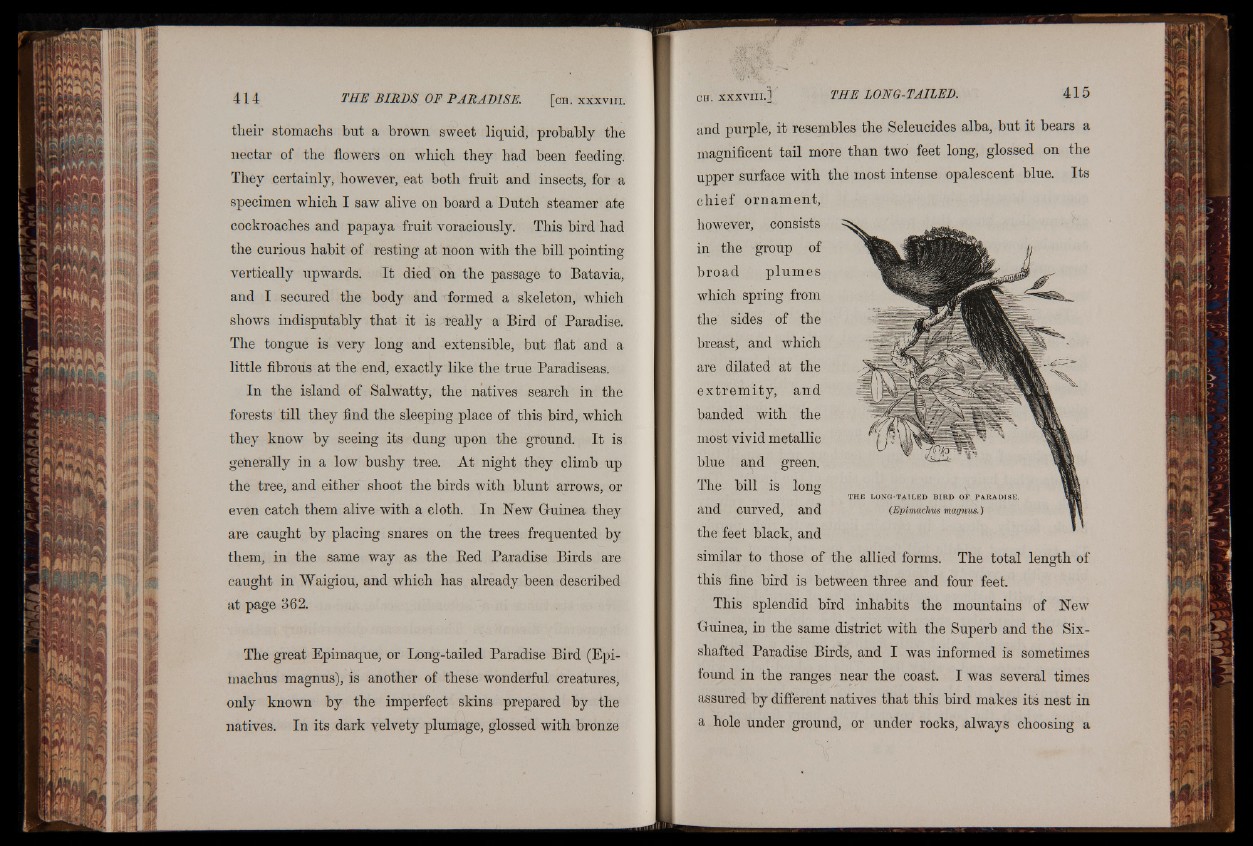
their stomachs but a brown sweet liquid, probably the
nectar of the flowers on which they had been feeding.
They certainly, however, eat both fruit and insects, for a
specimen which I saw alive on board a Dutch steamer ate
cockroaches and papaya fruit voraciously. This bird had
the curious habit of resting at noon with the bill pointing
vertically upwards. It died on the passage to Batavia,
and I secured the body and formed a skeleton, which
shows indisputably that it is really a Bird of Paradise.
The tongue is very long and extensible, but flat and a
little fibrous at the end, exactly like the true Paradiseas.
In the island of Salwatty, the natives search in the
forests till they find the sleeping place of this bird, which
they know by seeing its dung upon the ground. It is
generally in a low bushy tree. At night they climb up
the tree, and either shoot the birds with blunt arrows, or
even catch them alive with a cloth. In New Guinea they
are caught by placing snares on the trees frequented by
them, in the same way as the Bed Paradise Birds are
caught in Waigiou, and which has already been described
at page 362.
The great Epimaque, or Long-tailed Paradise Bird (Epi-
maehus magnus), is another of these wonderful creatures,
only known by the imperfect skins prepared by the
natives. In its dark velvety plumage, glossed with bronze
and purple, it resembles the Seleucides alba, but it bears a
magnificent tail more than two feet long, glossed on the
upper surface with the most intense opalescent blue. Its
chief ornament,
howTever, consists
in the group of
broad plumes
which spring from
the sides of the
breast, and which
are dilated at the
extremity, and
banded with the
most vivid metallic
blue apd green.
The bill is long
and curved, and
the feet black, and
similar to those of the allied forms. The total length of
this fine bird is between three and four feet.
This splendid bird inhabits the mountains of New
Guinea, in the same district with the Superb and the Six-
shafted Paradise Birds, and I was informed is sometimes
found in the ranges near the coast. I was several times
assured by different natives that this bird makes its nest in
a hole under ground, or under rocks, always choosing a